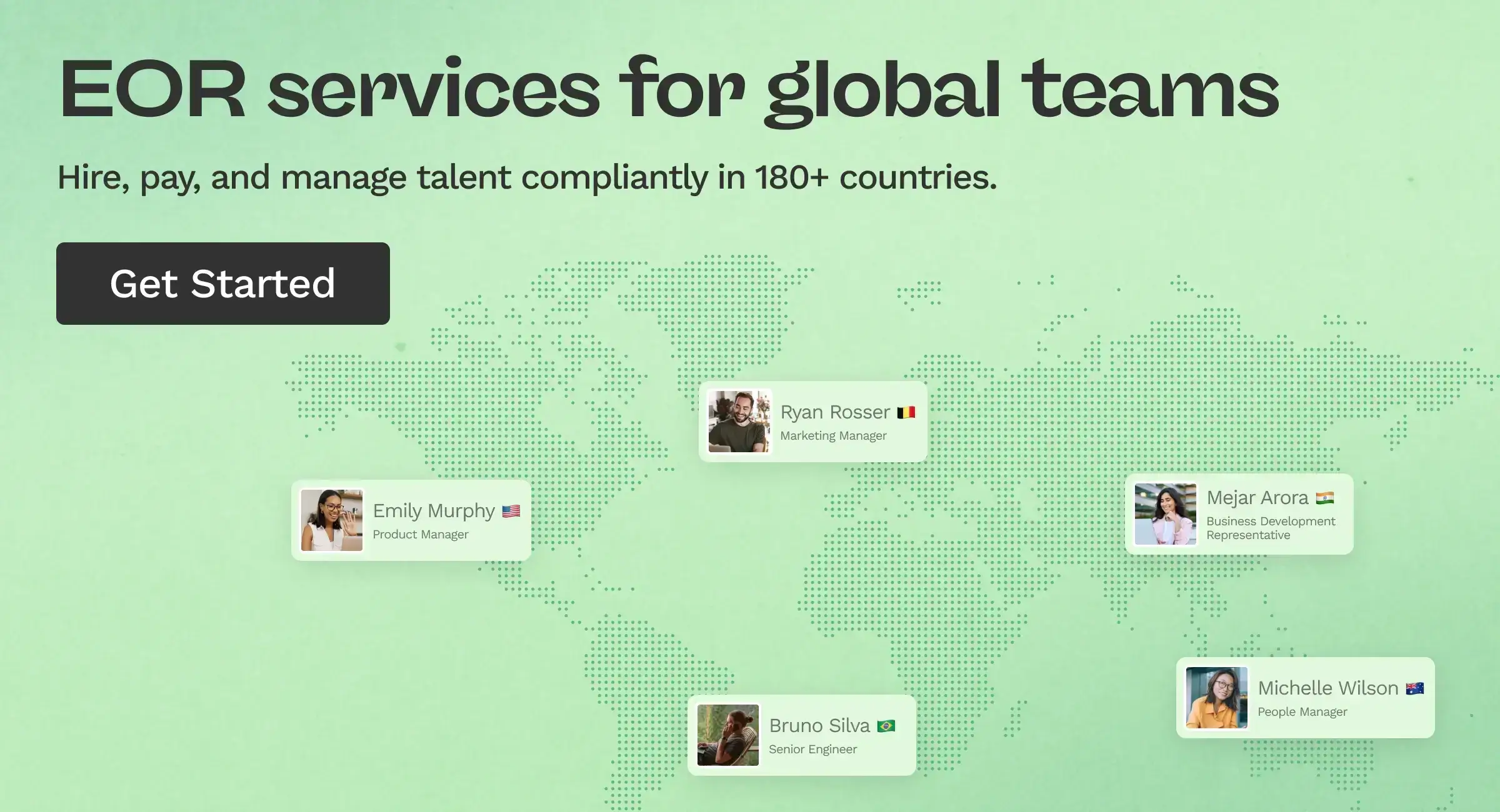Remote work and global hiring aren’t slowing down anytime soon. Companies are building teams across borders, and individuals are finding more ways to work outside the traditional nine-to-five. But with all that flexibility comes paperwork that can’t be ignored. One of the most important steps—both for employers and workers—is understanding the difference between 1099 contractors and W-2 employees.
In this guide, we’ll break down the essentials of 1099 versus W-2 employees so you can hire, manage, and report with confidence.
W2 and 1099: Understanding the main concepts
A W-2 employee works for a company and receives a steady paycheck through payroll. The employer withholds income taxes, Social Security, and Medicare contributions, and often provides benefits like health insurance and retirement plans. Because the company sets work hours and expectations, W-2 employees usually have less flexibility but more security and support.
A 1099 worker operates as an independent contractor and runs more like their own business. They handle calculating and paying their own taxes, including self-employment tax and quarterly estimated taxes. They also typically don't receive benefits from the company they contract with. Since they control how and when the work gets done, 1099 workers often enjoy more freedom but also take on more financial risk and responsibility.
Examples of W2 workers include:
- Office administrators who typically work in an office setting, managing schedules, organizing files, and handling communications under the direction of company management
- Retail store managers who oversee the daily operations of a retail store, including managing staff, organizing inventory, and ensuring customer satisfaction while adhering to corporate policies
- Software developers who create, test, and maintain software applications per the employer's specifications and requirements
- Healthcare professionals who work scheduled shifts, provide patient care, and perform duties according to hospital guidelines under the supervision of hospital administration
Examples of 1099 workers include:
- Rideshare or meal delivery drivers who use their own vehicles to provide transportation or deliver food and earn based on the number of rides or deliveries completed, often with the possibility of earning tips
- Independent contractors in trades like plumbing or electrical work who often operate their own businesses or work through various vendors and use their own tools and equipment to provide essential services to residential, commercial, or industrial clients
- Freelancers in creative fields such as writing, graphic design, and web development who offer their skills on a project-by-project basis to multiple clients simultaneously, often working irregular hours to meet project deadlines and client time zones
- Consultants, such as brand specialists, who provide expert advice and strategic solutions to businesses wanting to develop or refresh their brand identity and, may collaborate with the client’s in-house teams or manage the entire project independently

1099 taxes vs. W-2: 5 differences explained
The way 1099 workers and W-2 employees are taxed, protected, and supported on the job looks very different. To make it clear, here's a table comparing five side-by-side differences that show what each classification really means.
How to classify your potential hire
If you’re deciding whether to classify someone as a W2 or 1099, consider these factors to make the choice clearer:
- Level of control: If you want to set a person’s hours, location, and responsibilities, they belong in a W-2 role. If the work is project-based and the person controls how it gets done, they fit as a 1099 worker.
- Length of engagement: If the role is ongoing and central to your business, treat it as a W-2 position. If it’s short-term or tied to a specific deliverable, it may be a better fit for a 1099 contract.
- Financial commitment: If you plan to provide steady paychecks and benefits, you’re looking at a W-2 hire. If you need flexibility and don’t want the added cost of benefits, a 1099 arrangement makes more sense.
- Legal compliance: If labor laws in your region apply to the role, you’ll need to classify it as W-2. If the person operates independently and you only owe them the contracted fee, a 1099 is the safer route.
Can a worker get both a 1099 and a W-2?
Yes, the same person can receive both forms in a single year. But it depends on the type of work they do and how employers classify each role. Someone can be a W-2 employee for one job and a 1099 contractor for another, or even wear both hats with the same company under different arrangements.
Here are a few examples of how that can play out:
- A teacher earns a W-2 from the school where they work full-time and a 1099 from tutoring students on the side.
- A nurse gets a W-2 from their hospital employer and a 1099 for picking up freelance telehealth shifts.
- A software engineer collects a W-2 from their in-house job and a 1099 for building websites as a freelancer on weekends.
- A marketing professional receives a W-2 from their agency role and a 1099 for consulting independently with small businesses.
Hire compliantly and globally with Oyster
Knowing the difference between 1099 workers and W-2 employees helps you classify roles correctly, follow the law, and set expectations from the start. Choosing wisely safeguards your business and makes hiring smoother overall.
Oyster makes the process even easier. Our platform streamlines the management of W-2 employees and 1099 contract workers, handling compliance and administration so you can focus on growth instead of paperwork.
Discover how Oyster’s Employer of Record (EOR) solution simplifies hiring, payroll, and compliance for talent anywhere.

FAQs
What are the benefits of a 1099 vs. a W-2?
The benefits depend on what you value most—flexibility or stability. Here’s what each one offers:
For 1099 workers, the perks come from freedom. They choose when and how to work, take on multiple clients, and often earn more per project. That independence gives them control but also more responsibility.
For W-2 employees, the primary advantage is security. They get steady paychecks, employer-sponsored benefits, and legal protections like minimum wage and overtime. That stability makes it easier to plan for the future without worrying about handling taxes and benefits on your own.
Is it better for an employer to do a W-2 or a 1099?
It depends on what the business needs. Let’s take a closer look at both:
W-2 employees give employers stability. They’re available long-term, they build company knowledge, and they’re easier to integrate into teams and culture. Employers also have more control over schedules and responsibilities.
1099 workers give employers flexibility. They’re ideal for short-term projects, specialized skills, and scaling up quickly without the ongoing costs of benefits and payroll taxes. Employers only pay for the work they need, when they need it.
About Oyster
Oyster is a global employment platform designed to enable visionary HR leaders to find, engage, pay, manage, develop, and take care of a thriving distributed workforce. Oyster lets growing companies give valued international team members the experience they deserve, without the usual headaches and expense.
Oyster enables hiring anywhere in the world—with reliable, compliant payroll, and great local benefits and perks.







